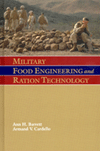Researchers are refining system designs and processes and discovering misconceptions about how the process actually works.

High pressure processing (HPP) has moved from novelty to almost-mainstream food processing technology in recent years.
A growing assortment of refrigerated foods—from oysters and guacamole dips to fresh juices and ready-to-eat meals and meats—is being subjected to pressure treatments, typically in the 85,000 psi range.
The objective is to deliver minimally processed foods and beverages that are superior in taste, texture and nutritional content to traditionally processed foods and also safer, thanks to high pressure’s ability to destroy both pathogens and viruses. HPP also helps extend shelf life.
Shelf stable products are another matter. Pressure in excess of 100,000 psi is needed to inactivate bacteria that form heat-resistant spores as a defensive mechanism, such as the highly toxic Clostridium botulinum anaerobic bacterium. Even then, some researchers question HPP’s effectiveness in rendering food shelf stable. Studies in which products have been subjected to high pressure for 15 minutes or longer have concluded HPP was unsuccessful at inactivating spores, even when heat shock preceded HPP.
Those studies are misguided or downright wrong, according to Joseph Dunn, director of technology assessment at the National Center for Food Safety and Technology (NCFST) in suburban Chicago. Dunn recently assumed responsibility for the center’s HPP research under the auspices of the Dual Use Science and Technology (DUST) program. A three-year Department of Defense initiative, DUST is designed to nurture technologies with both commercial and military applications.
To clarify the current state of HPP science, Food Engineering recently spoke with Dunn, who also serves as NCFST’s chief safety officer. A graduate of Oregon State University with a doctorate in microbiology, he is an expert in sterilization science who has been involved in both food and pharmaceutical manufacturing.

FE: How does HPP for shelf stable products differ from HPP for refrigerated foods?
Dunn: With refrigerated foods, high-pressure treatment can begin at ambient temperature. Pathogens are inactivated, but not spores. To kill the spores that can be present and pose a great risk in shelf-stable products, two temperatures are critical: the initial temperature of the food when it is brought into the high-pressure chamber, and the processing temperature. While refrigerated foods can be processed at ambient temperature, shelf stable products need to start at 70° to 90°C (158° to 194°F) and be subjected to pressures of up to 700 MegaPascals (120,000 psi). That's the equivalent of about 7,000 barometric pressures.
Pressurization produces compression, or adiabatic heating, with the amount of heating relative to the amount of compression of the constituents of the food. Water compresses up to 20 percent at the top range. For each 100 MegaPascals (MPa) increase in pressure, the temperature of water increases 3° to 4°C. Fats and oils increase 7° to 9°C in temperature per 100 MPa. So if you compress a lipid to 700 MPa and you begin at 70°C, you have a processing temperature of 119° to 133°C.
Time and temperature are important, just as they are with thermal processing, but the importance of compression heating is one of the significant understandings we've gained. Unfortunately, most food researchers have not understood that, and as a result they have failed to understand the significance of temperature in the process.
FE: What is the essence of this misunderstanding?
Dunn: Metals don't compression heat, and HPP systems use a lot of metal, including the barrel that surrounds the food. That barrel stays relatively cold and acts as a heat sink. The heat that the food is exposed to is being drained away by the walls of the vessel. Consequently, HPP systems experience temperature variance, and that impacts the effectiveness of the system. The longer the process, the greater the temperature drop that occurs. The process becomes increasingly inefficient. Unfortunately, there are experts in the field who don't understand that long process runs are inappropriate and are conducting tests with hold times of 20 minutes or more. Long process times are unnecessary if proper temperature control is maintained, and temperature control is essential.
FE: How much temperature variation occurs during HPP?
Dunn: I don't think we know the answer yet. What we do know is that researchers have not been properly monitoring and controlling temperature in their high-pressure tests. As a result, you can take most of the literature published so far on HPP and just throw it all away; it’s garbage.
With HPP, very high levels of bacillus spores can be inactivated within seconds at 700 MPa and at process temperatures below 121°C, whereas the same spore preparation would require minutes at that temperature and atmospheric pressure for a single log cycle reduction. For most foods, a temperature of 105° to 110°C for a few minutes at high pressure will probably bring them close to sterility, but nobody knows that yet. The important point is that there are two temperatures involved: the initial temperature of the food, which should be at least 70°C, and the process temperature, which is the one you need to control.
FE: Can temperature variance be minimized?
Dunn: It's very difficult to do on a commercial unit. We have a small HPP unit in our lab on which we've replaced stainless steel carriers for the food with plastic carriers. Our temperature probes have shown flat temperatures with plastic for up to 300 seconds. Pressure speeds up thermal deactivation, and you don't really want a commercial process that takes more than a few minutes, so that kind of consistency is more than adequate.
FE: What kind of plastic did you use?
Dunn: We've replaced stainless with PVC and Delrin, which are easily machinable. The plastics get hotter than the food, but how much hotter and what impact this has on D and Z values is not yet understood. What will be the best plastic to use and its expected cycle life are other questions that need to be addressed. In the meantime, equipment manufacturers have incorporated some of these findings in their system designs.
FE: What is the current focus of your HPP research?
Dunn: I view HPP as a finishing process, much like retort follows and finishes the cooking process. We're focusing on the inactivation kinetics of surrogate spores of Clostridium sporogenes. This is married to the work now underway at the National Food Lab (NFL) in Dublin, Calif., where they're working with C. botulinum. One of our surrogates is Bacillus stearothermophilus, which is found near hot springs and flourishes at temperatures of 55° to 70°C. The data from NFL and our tests will be put together to create a thermal-like, log linear model of the inactivation kinetics of high pressure. This will enable people to relate time, temperature and pressure needed for Clostridium inactivation for a given food. Essentially, you can then define a process, and that's what our industrial partners want. Without it, how can you evaluate an HPP food?
We used to think that sterilization was like pregnancy: something is either sterile or it's not. We no longer look at it that way. By understanding the inactivation kinetics, we can predict the levels of safety that a process can deliver. We understand a lot more about sterilization processes today than we did 20 years ago. Just as there are well understood guidelines for retort, we intend to develop a model for HPP that defines the process with reproducible and predictable results.
FE: What other aspects of HPP require more research?
Dunn: We've learned that HPP sterilization is a pressure-assisted thermal process, but there clearly are other things going on. We're starting to understand that there is a pH shift, with foods becoming more acidic by a pH of 2 or 3 during the process, then returning to their original pH after pressure is released. This relates to Le Chautlier's Principle. We're still developing the measurement tools needed to monitor changes in pH.
Also, we've noted a difference in the Maillard effect, the enzymatic browning and softening that sometimes occurs with retort processes that result in the cooked, off notes in food. This doesn't seem to occur with high pressure, suggesting this might be a reversible reaction that is inhibited by high pressure.



